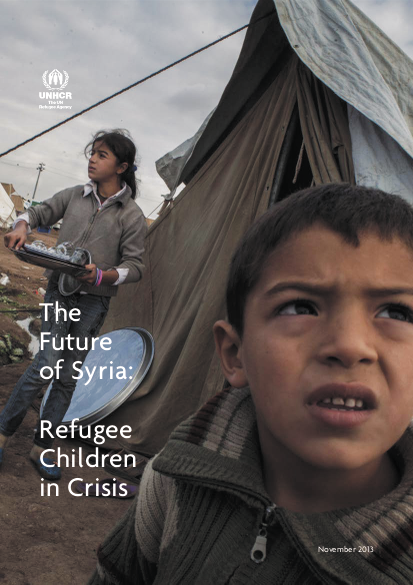
This report highlights the painful challenges Syrian refugee children face everyday. It details the horrors these children have suffered—lovedones dying around them, their schools closed, their friends lost.
Research conducted over four months in Lebanon and Jordan found that Syrian refugee children face a startling degree of isolation and insecurity. If they aren’t working as breadwinners—often doing menial labour on farms or in shops—they are confined to their homes.
Perhaps the statistic we should pay the most attention to is: 29 per cent of children interviewed said that they leave their home once a week or less. Home is often a crammed apartment, a makeshift shelter or a tent. It should be no surprise that the needs of these children are vast. Too many have been wounded physically, psychologically or both. Some children have been drawn into the war—their innocence ruthlessly exploited.
A grave consequence of the conflict is that a generation is growing up without a formal education. More than half of all school-aged Syrian children in Jordan and Lebanon are not in school. In Lebanon, it is estimated that some 200,000 schoolaged Syrian refugee children could remain out of school at the end of the year.
Another disturbing symptom of the crisis is the vast number of babies born in exile who do not have birth certificates. A recent UNHCR survey on birth registration in Lebanon revealed that 77 per cent of 781 refugee infants sampled did not have an official birth certificate. Between January and mid-October 2013, only 68 certificates were issued to babies born in Za’atari camp, Jordan.
Over 1.1 million Syrian children are refugees. This shameful milestone of conflict must deliver more than headlines.
Humanitarian organizations and governments are desperately trying to address the needs of the vulnerable children—but much more needs to be done if we are to avert a catastrophe. We must all work to:
- Keep the borders open;
- Help the neighbours;
- Stop recruitment and exploitation of children:
- Expand resettlement and humanitarian admissions programmes for Syria’s children;
- Provide alternatives so children do not have to work;
- Prevent statelessness.
The multimedia version of the report can be found at: http://unhcr.org/FutureOfSyria/index.html